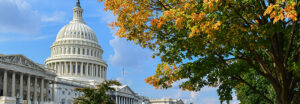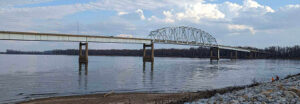EDA’s Disaster Supplemental Funding can repair infrastructure damaged by flooding, conduct vulnerability assessments to identify future flood risks, fortify infrastructure against current and future flood risks, access revolving loan funds, build local capacity through resilience coordinators, and engage the community to create a collective vision for economic resilience.
| Requires a Major Disaster Declaration | Encourages public-private partnerships | ||
| Has a regional or watershed focus |
Application cycle: Applications for Readiness and Implementation grants will be accepted on an ongoing (rolling) basis. Applications for Industry Transformation grants are due March 3, 2026 at 5:00 pm Eastern Time.
Summary: Communities impacted by Presidentially Declared Disasters may apply for multi-million-dollar grants through the Economic Development Administration’s (EDA) Disaster Supplemental Funding program. Currently, two active funding rounds are available. The FY25 round includes $1.447 billion for communities impacted by hurricanes, wildfires, tornadoes, severe storms, and flooding occurring in calendar years 2023 and 2024. Meanwhile, the FY23 round remains open with $480 million still available for communities affected by Hurricanes Ian and Fiona, wildfires, flooding, and all Presidentially-declared major disasters from 2021 and 2022. These funds can support resilience-focused projects that strengthen recovery, reduce future losses, and improve long-term economic stability. Communities may also use the funding to establish revolving loan funds to further support local recovery efforts.
Eligible applicants: State, county, city or other political subdivision of a State, Indian Tribes, Economic Development Districts, institution of higher education, public or private nonprofit organization acting in cooperation with a political subdivision of a State, a public-private partnership for public infrastructure.
Eligible activities: Construction activities, such as restoring damaged infrastructure, enhancing existing infrastructure, and building new infrastructure, including high performance and resilient infrastructure. Other activities include economic recovery, strategic planning, public works construction, and the implementation of disaster recovery strategies. Communities can also use grant dollars to access revolving loan funds. This funding is available through three distinct paths:
- Readiness Path: Supports non-construction activities that help communities prepare for future recovery projects, such as hiring recovery or resiliency coordinators, conducting vulnerability assessments, and developing strategic recovery plans.
- Implementation Path: Funds construction and non-construction projects that advance disaster recovery and improve long-term economic outcomes. These include infrastructure repair and upgrades, flood mitigation improvements, and the establishment of revolving loan funds for local businesses.
- Industry Transformation Path: Supports large-scale, coalition-led efforts that transform regional economies, such as relocating critical infrastructure to more resilient areas, launching climate-resilient industrial parks, or creating job hubs focused on disaster-resilient industries.
Funding: Varies by path; approximately $1.447 billion was made available under the FY2025 program, with individual awards ranging from $250,000 to $50 million depending on project type and scope. EDA makes awards based on the specific circumstances of proposed projects. For example, Port Aransas, Texas (population fewer than 5,000), received $5 million in Disaster Supplemental Funding for recovery and mitigation efforts to repair multiple buildings and prepare for future disasters by installing a new seawater system at the University of Texas at Austin Marine Science Institute Campus following Hurricane Harvey in 2017.
Cost share:
- In general, 80% federal / 20% local.
- EDA may establish a maximum investment rate of up to 100% for projects of Indian Tribes.
- Filter — Needs-Based Cost Sharing: EDA will consider on a case-by-case basis whether the circumstances of a proposed project warrant a federal cost share in excess of 80%.
- Filter — Tribal Communities: EDA may establish a maximum investment rate of up to 100% for projects of Indian Tribes.
Application process:
- For more information, visit EDA’s website or read the Notice of Funding Opportunity.
- Apply through EDA’s grant platform, EDGE (sfgrants.eda.gov).
- EDA anticipates awards will typically have a period of performance of 12 to 48 months.
- EDA encourages the submission of applications based on long-term, regionally oriented, coordinated, and collaborative economic development or redevelopment strategies that foster economic growth and resilience. EDA will regard applications that are substantively supported by such strategies as more competitive.


